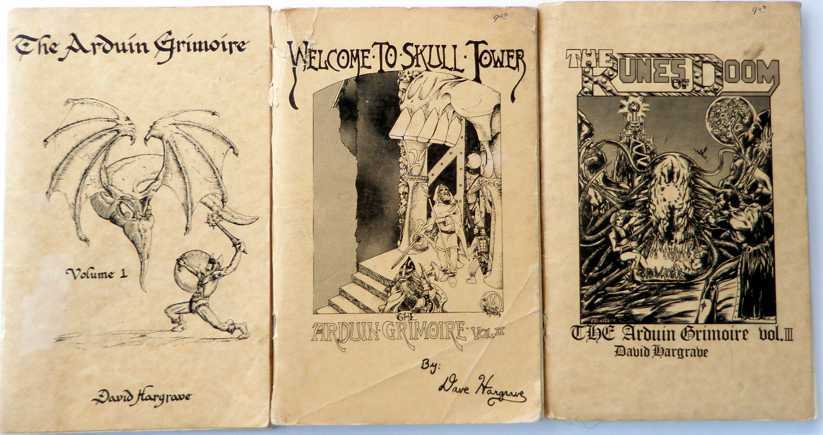I started to feel that I didn’t know roleplaying games well enough so I came up with the plan to read a roleplaying game corebook for every year they have been published. Selection criteria is whatever I find interesting.

The Arduin Grimoire is in many ways a watershed in my project to read a roleplaying game corebook for every year they’ve been published. It’s the first I’m reading not published by TSR or its predecessors and it’s also the first to position itself against the existing field of roleplaying games.
In its preface, the Grimoire describes it self as an indie-style work of rebellion against the stultifying world of Big RPG. That’s quite amazing, considering that in 1977 roleplaying games have existed at all for just a few short years!
The Grimoire is also different from its predecessors in a more philosophical way. Every game I’ve read until this has felt like an exploration of new territory, designed to push the boundaries of what this novel artform can be. In contrast, the Grimoire very concretely concerns itself with the creative space already mapped out by Dungeons & Dragons. It doesn’t seek to expand territory but rather examine some of its characteristics in more detail.
Designed by David A. Hargrave, who’s described on Wikipedia as “one of the best Gamemasters”, The Arduin Grimoire is essentially a D&D hack. It’s impossible to understand without knowledge of D&D and some of its references go back to Chainmail. Yet I think it’s justified to call it a roleplaying game of its own because it brings a definite new sensibility and punk attitude to the game its riffing on. My feeling is that when it was published, it was usable by the community because the D&D basics it relies on were such common knowledge.
The book contains rules for combat, new character classes, monsters and spells. In short, the standard stuff of roleplaying game books. There’s a lot of commentary on how different aspects of D&D should be understood, making it almost like a series of auteuristic annotations of the common holy text of D&D.
All the games I’ve read so far have been made with the goal of creating a good, playable game. Reading D&D or Metamorphosis Alpha, this seems the basis of the design despite its anachronistic nature. The Grimoire introduces a new design goal: “realism”.
Hargrave approaches this theme with a certain commitment. He talks about watching people fight with medieval weapons at the SCA and using those insights in his game design.
The results of this approach of trying to make the game realistic tend to make it massively more clunky. For example, if the enemy attacks from the front left of a fighter holding a shield with his left hand, the fighter gains a bonus to his defense but a minus to his attack. It makes sense but when you have a thousand little rules like this, combat becomes a muddle.
I have personal experience with this: When I was maybe fourteen, I was playing AD&D 2nd Edition. Like so many of us in the early Nineties, I believed that increased complexity would make the game more “realistic”, and therefore good. Adding things like hit locations and fatigue to the game eventually slowed things down so much that one fight could take an evening to play out. The spectacle of our wizards and elves fighting purple worms on the Astral Plane must have been very realistic indeed but it was not good roleplaying.
This is the direction The Arduin Grimoire points at. It was published in 1977 and history shows that it was a harbinger of decades of adventures in game design where simulating aspects of reality is the top goal.
Here’s a post about The Grimoire that has useful historical context and perspective.